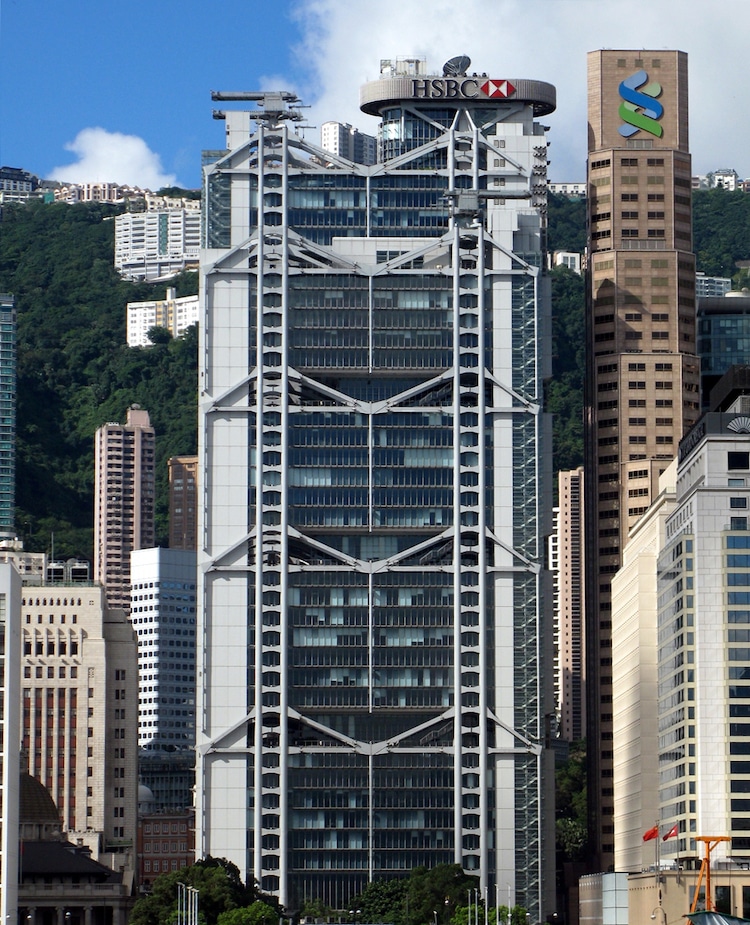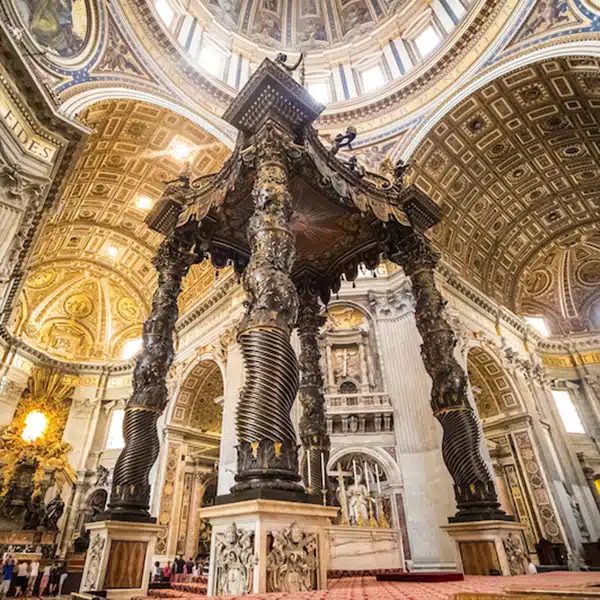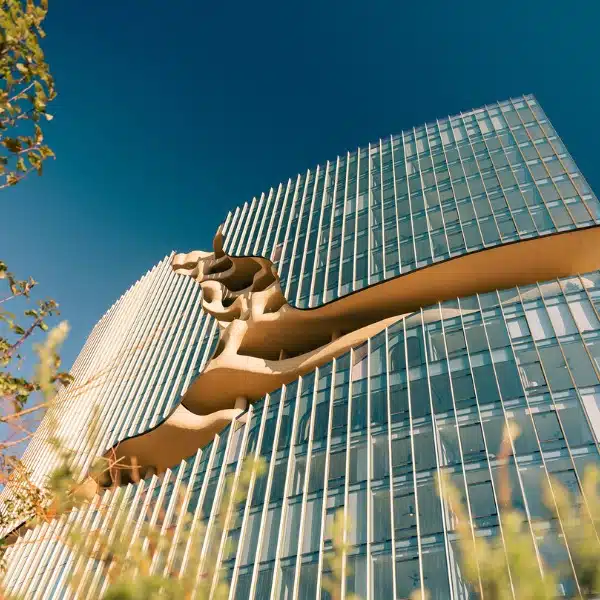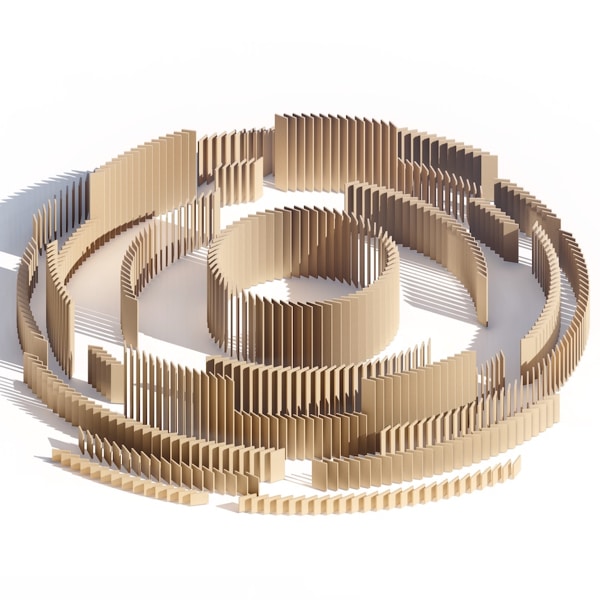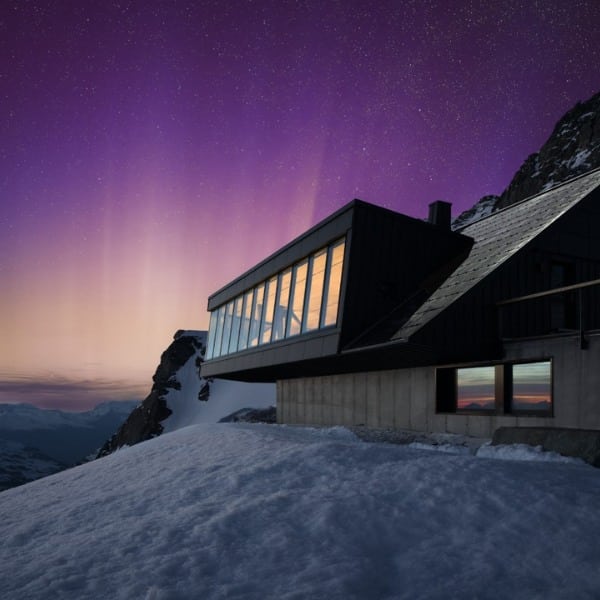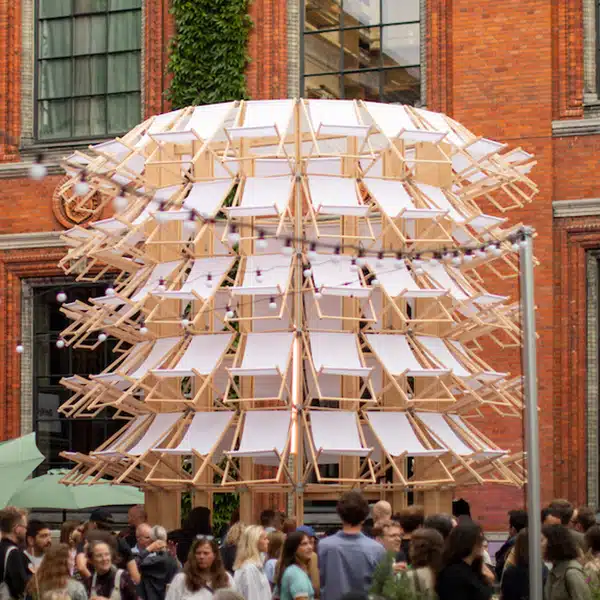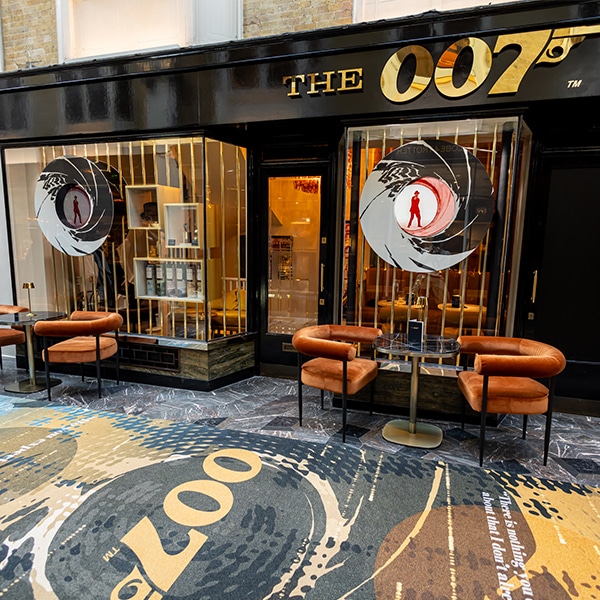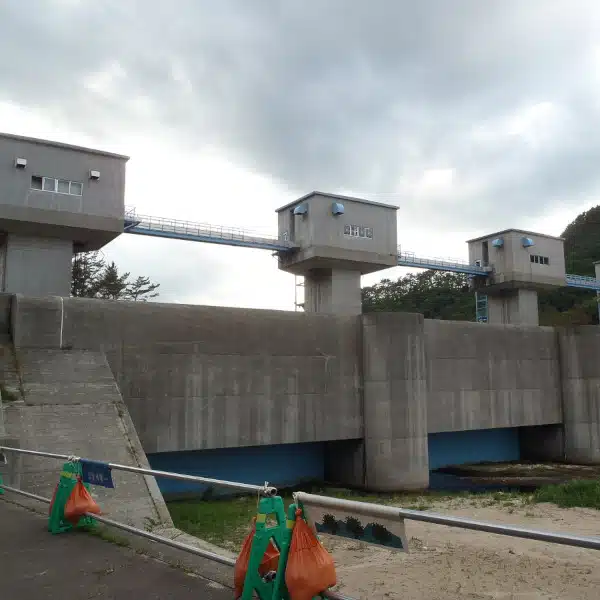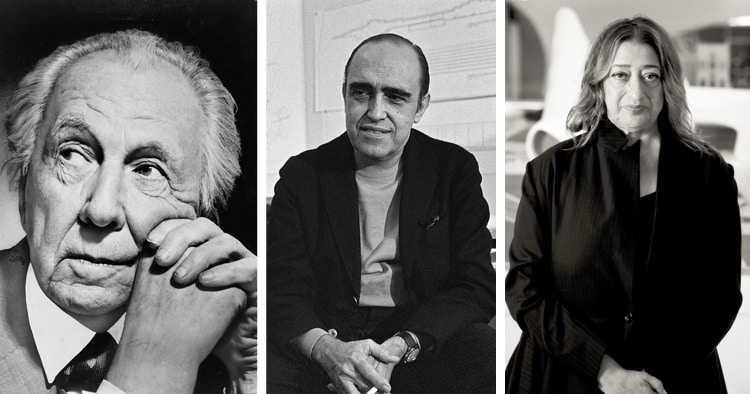
From left to right: Frank Lloyd Wright (Photo: New York World-Telegram and the Sun staff photographer: Al Ravenna via Wikimedia Commons, Public domain), Oscar Niemeyer (Photo: Mondadori Publishers via Wikimedia Commons, Public domain), Zaha Hadid (Photo: Dmitry Ternovoy via Wikimedia Commons, Public domain)
“The mother art is architecture. Without an architecture of our own, we have no soul of our own civilization.” These words by Frank Lloyd Wright encapsulate the importance of the built world. Without architecture, we would have nowhere to sleep, eat, work, and play. And thanks to the tireless work of history's most influential architects, we are able to effectively do all of those things.
The world's best architects not only design functional spaces but rather, create projects that elevate our daily lives and provide opportunities for growth. At the same time, the most innovative architects also seize the opportunities available to them, pushing the boundaries of what is possible.
This look at some of history's most famous architects moves from the organic forms of Catalan architect Antoni Gaudí to the audacious neo-futuristic buildings of Zaha Hadid. By discovering more about these creative geniuses, we will also learn more about how our society has grown and developed new ways of using space.
Here are 15 famous architects in history that have shaped the way our world looks.
Antoni Gaudí
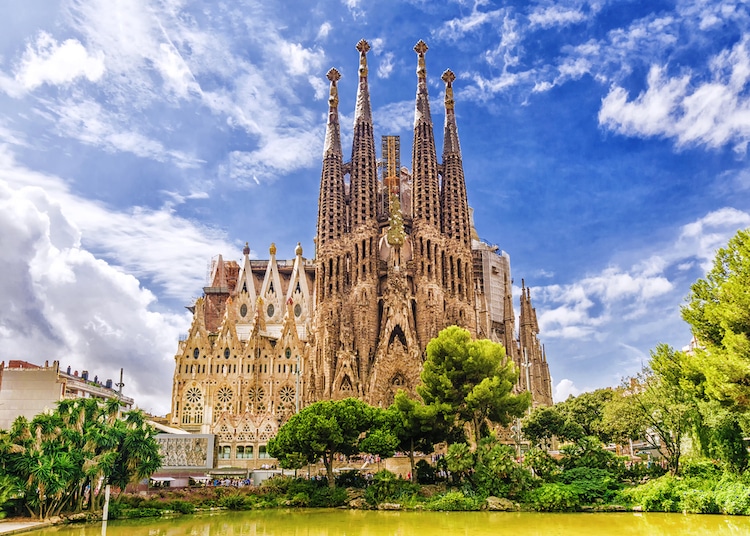
Sagrada Familia (Photo: deb-37/Depositphotos)
Full Name | Antoni Gaudí i Cornet |
Born | June 25, 1852 (Reus or Riudoms, Spain) |
Died | June 10, 1926 (Barcelona, Spain) |
Notable Work | La Sagrada Família |
Movement | Modernisme |
When Antoni Gaudí graduated from architecture school, the director stated that he wasn't sure if they'd given a diploma “to a madman or to a genius.” Time eventually showed that this father of Catalan Modernism was a bit of both. Barcelona is filled with his work, which incorporates natural motifs and new materials that were available thanks to the Industrial Revolution. His most well-known piece of architecture, the Sagrada Familia, has been under construction for over 135 years.
Frank Lloyd Wright

Fallingwater. (Photo: deb-37/Depositphotos)
Full Name | Frank Lloyd Wright |
Born | June 8, 1867 (Richland Center, Wisconsin) |
Died | April 9, 1959 (Phoenix, Arizona) |
Notable Work | Fallingwater, Guggenheim Museum |
Movement | Prairie School, Modernist |
American architect Frank Lloyd Wright wanted to create a style of architecture that his country could call its own. Starting with his Prairie School homes in Chicago, Wright certainly created a niche for American architecture that continued as his career developed across 70 years. From iconic residential projects like Fallingwater to important public spaces like the Guggenheim Museum, perhaps no other American architect has left such an imprint on the nation. Favoring clean lines, open spaces, and a dialogue with nature, Wright sought to create architecture that was a record of American civilization.
Ludwig Mies van der Rohe
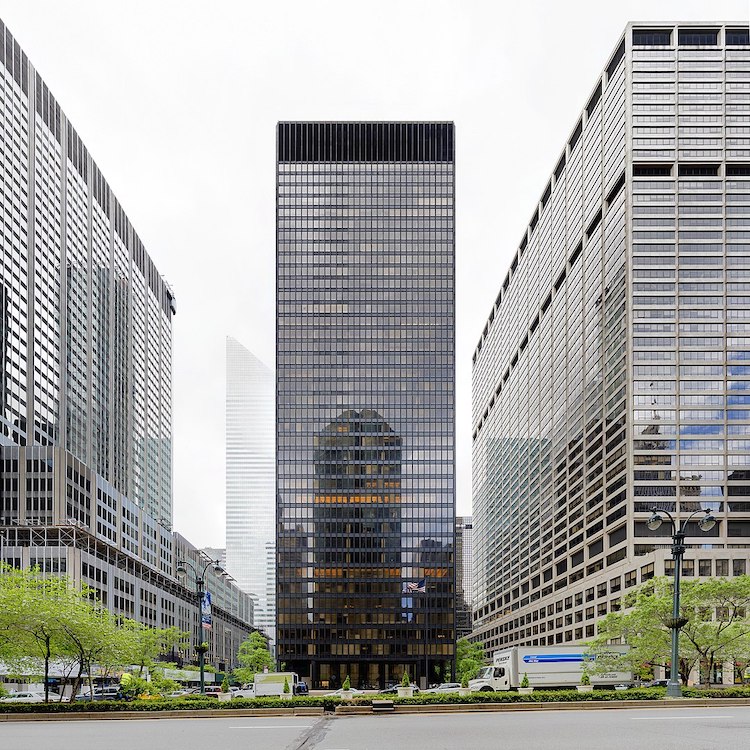
Seagram Building (Photo: Ken Ohyama via Wikimedia Commons, CC BY-SA 2.0)
Full Name | Maria Ludwig Michael Mies |
Born | March 27, 1886 (Aachen, Germany) |
Died | August 17, 1969 (Chicago, Illinois) |
Notable Work | Seagram Building |
Movement | Modernist |
German-American architect Ludwig Mies van der Rohe was the last director of the Bauhaus before the rise of Nazism forced him to emigrate to the United States. There, he enjoyed a successful art career and is considered part of the group of architects who were pioneers of modernism. He preferred a minimalist approach to architecture with free-flowing interiors. His acclaimed Seagram Building in New York City was designed in the International Style and is a fine example of his use of steel and glass.
Le Corbusier
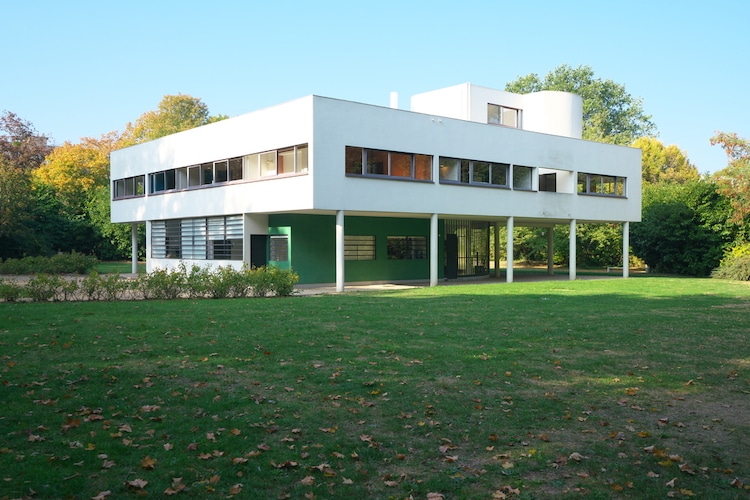
Villa Savoye (Photo: KhunTa/Depositphotos)
Full Name | Charles-Édouard Jeanneret-Gris |
Born | October 6, 1887 (La Chaux-de-Fonds, Switzerland) |
Died | August 27, 1965 (Roquebrune-Cap-Martin, France) |
Notable Work | Villa Savoye |
Movement | Modernist, International Style |
It's impossible to overstate the influence of Le Corbusier on the world of architecture. One of the fathers of modernism, Le Corbusier was part of the International Style that arose after World War I. He advocated for an absence of load-bearing walls to give people more living space and accommodate flexible living styles. Though he is also a controversial figure for his political and personal beliefs, there is no denying his impact on future generations of architects.
Louis Kahn
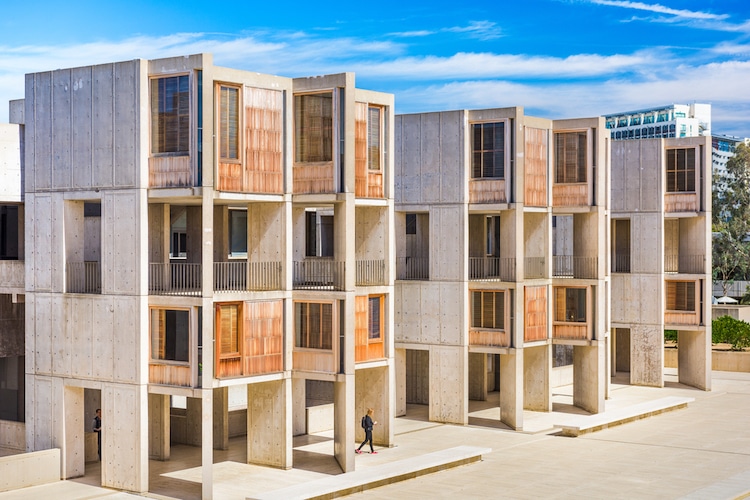
The Salk Institute (Photo: sepavone/Depositphotos)
Full Name | Itze-Leib Schmuilowsky |
Born | February 20, 1901 (Kuressaare, Estonia) |
Died | March 17, 1974 (New York City, New York) |
Notable Work | Kimball Art Museum, Salk Institute |
Movement | Modernist |
Known as a master of geometry, Louis Kahn is one of the most important architects of the 20th century. His most iconic project, the Salk Institute, displays all the characteristics that make Kahn's work so influential. The use of simple forms, symmetry and precise geometry are all hallmarks of Kahn's work.
Oscar Niemeyer
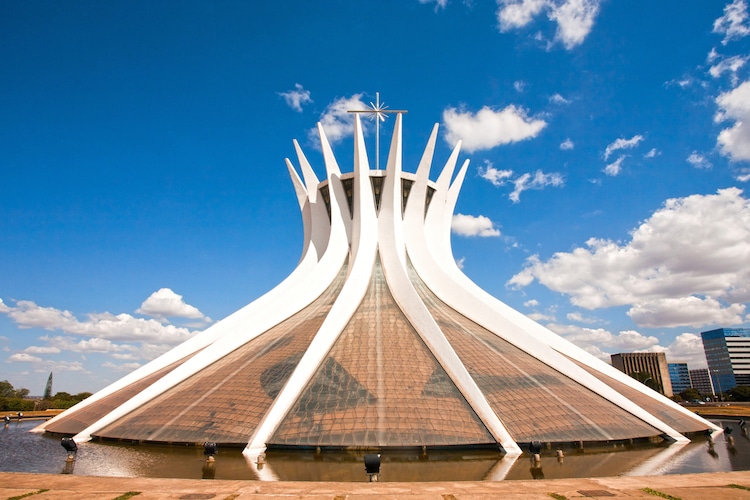
Cathedral of Brasilia (Photo: STYLEPICS/Depositphotos)
Full Name | Oscar Ribeiro de Almeida Niemeyer Soares Filho |
Born | December 15, 1907 (Rio de Janeiro, Brazil) |
Died | December 5, 2012 (Rio de Janeiro, Brazil) |
Notable Work | Cathedral of Brasília |
Movement | Modernist |
Architect Oscar Niemeyer was a leading figure in the modernist movement in Brazil. He is particularly known for his work in developing Brasília, which was then the new capital of the country. Believing that curved lines were more pleasing to the eye, he rejected the angularity of modern architecture. At the same time, his use of white concrete with pops of primary color was thoroughly modern. Niemeyer won the Pritzker Prize in 1988 and his legacy is evident in his many civic buildings in Brasília.
Eero Saarinen
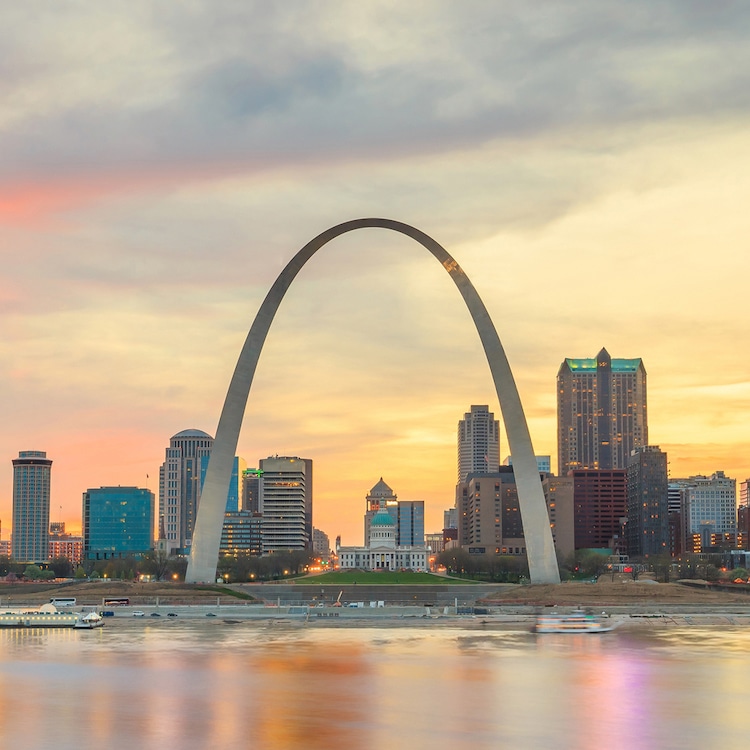
Gateway Arch (Photo: f11photo/Depositphotos)
Full Name | Eero Saarinen |
Born | August 20, 1910 (Kirkkonummi, Finland) |
Died | September 1, 1961 (Ann Arbor, Michigan) |
Notable Work | Gateway Arch, TWA Flight Center |
Movement | International Style |
Finnish-American architect Eero Saarinen is known both for his work on important monuments and his contributions to industrial design. The son of an architect, Saarinen is known for his dramatic, sweeping forms that are direct in their communication. This makes his work particularly impactful. One of his most famous projects was the TWA Flight Center, which has now been transformed into a hotel. And with his Gateway Arch in St. Louis, Saarinen created one of the most recognizable monuments in America.
I.M. Pei
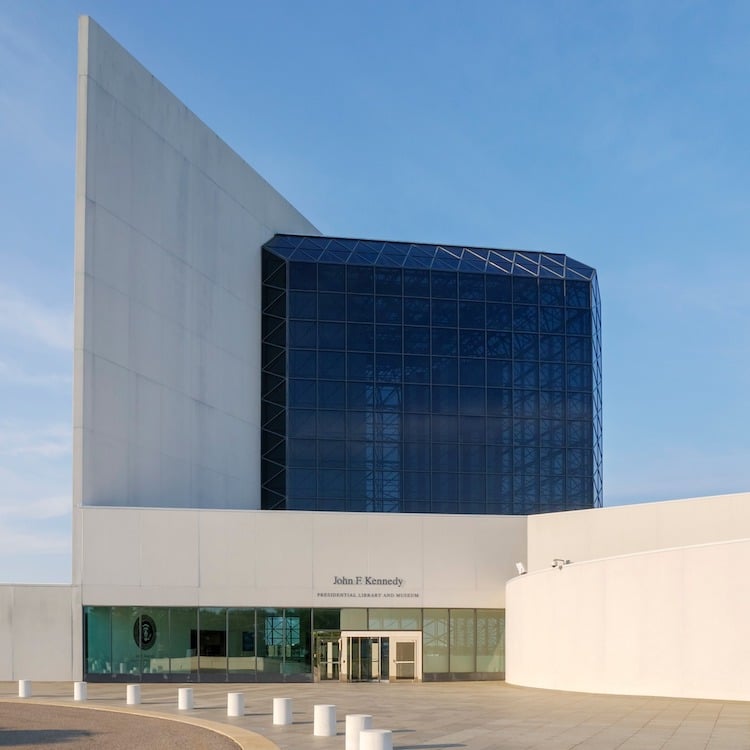
JFK Library and Museum (Photo: mjbs/123RF)
Full Name | Ieoh Ming Pei |
Born | April 26, 1917 (Guangzhou, China) |
Died | May 16, 2019 (New York City, New York) |
Notable Work | Louvre Pyramid, John F. Kennedy Library |
Movement | Modernist |
World-renowned Chinese American architect I.M. Pei was a champion of modernism who is known for his striking use of steel and glass. No stranger to controversy, his most well-known work is the glass Louvre Pyramid which opened to the public in 1989. The daring design is now a beloved part of the museum and is just one of many iconic pieces of architecture that Pei created across Europe, Asia, and North America.
“At one level my goal is simply to give people pleasure in being in a space and walking around it,” he once said. “But I also think architecture can reach a level where it influences people to want to do something more with their lives. That is the challenge that I find most interesting.”
Frank Gehry

Dancing House (Photo: Madrabothair/Depositphotos)
Full Name | Frank Owen Goldberg |
Born | February 28, 1929 (Toronto, Canada) |
Notable Work | Dancing House, Walt Disney Concert Hall |
Movement | Deconstructivist |
Visionary architect Frank Gehry has been a household name for most of his career. From the Walt Disney Concert Hall in Los Angeles to the Dancing House in Prague, Gehry is known for his striking postmodernist style. By incorporating unique materials like bent sheets of metal into his design, he has been able to carve out a distinct look to his deconstructivist buildings. In 1989, Gehry was awarded the Pritzker Prize.
Norman Foster
Full Name | Norman Robert Foster |
Born | June 1, 1935 (Reddish, England) |
Notable Work | HSBC Main Building |
Movement | High-Tech Architecture |
Known for his high-tech, industrial style, British architect Norman Foster is the founder of the highly-successful firm Foster + Partners. He is known for his innovative use of steel and glass and some of his most famous projects include London's “The Gherkin” and the HSBC Main Building in Hong Kong. In 1999 he won the Pritzker Prize and in 2022, it was announced that Foster would contribute to the rebuilding of Ukraine after the Russian invasion.
Renzo Piano
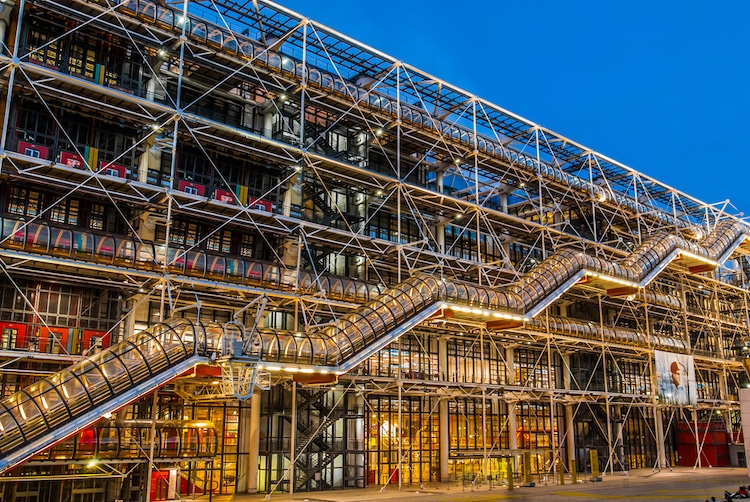
Centre Pompidou (Photo: STYLEPICS/Depositphotos)
Full Name | Renzo Piano |
Born | September 14, 1937 (Genoa, Italy) |
Notable Work | Centre Pompidou, The Shard |
Movement | High-Tech Architecture |
Italian architect Renzo Piano first gained acclaim for his high-tech design of Paris' Centre Pompidou. His interest in incorporating technology into his designs continued, as he uses this technology to solve architectural problems. Some of his most notable projects include the Whitney Museum, the Kansai International Airport Terminal, and London's The Shard.
Tadao Ando
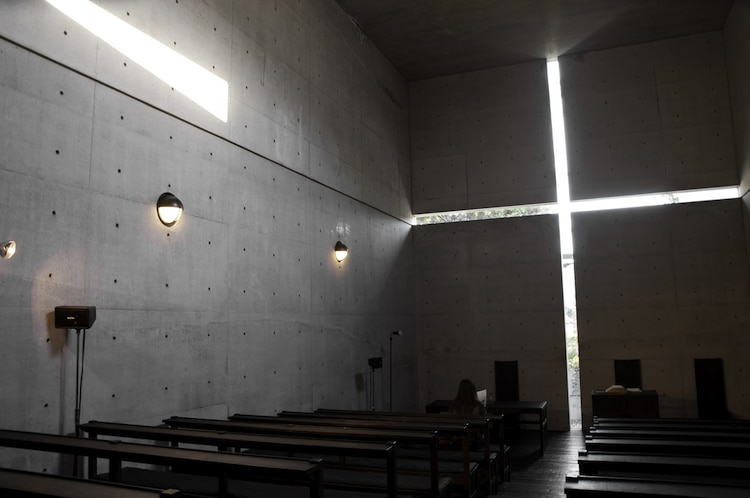
Church of the light (Photo: siranaamwong/Depositphotos)
Full Name | Tadao Ando |
Born | September 13, 1941 (Minato-ku, Osaka, Japan) |
Notable Work | Church of Light |
Movement | Critical Regionalism |
Japanese architect Tadao Ando is known for his deeply personal aesthetic that focuses on the minimalist form of his buildings. The self-taught architect, who won the 1995 Pritzker Prize, often uses concrete to execute his vision and masterfully incorporates light and other natural elements into the design. In this way, the natural world becomes an important part of his buildings. His work often takes on a spiritual quality and one of his most well-known pieces is the Church of Light.
“I don’t believe architecture has to speak too much,” says Ando. “It should remain silent and let nature in the guise of sunlight and wind.”
Rem Koolhaas

CCTV Headquarters (Photo: fotokon/123RF)
Full Name | Remment Lucas Koolhaas |
Born | November 17, 1944 (Rotterdam, Netherlands) |
Notable Work | CCTV Headquarters |
Movement | Deconstructivist |
Seen as one of the great architectural thinkers of his generation, Dutch architect Rem Koolhaas is known for both his architectural theory and building projects. As a founding partner of the firm OMA, Koolhaas has designed important projects like the CCTV Headquarters in Beijing and the Qatar National Library. His deconstructivist work often defies gravity and through wide-ranging designs for retail spaces, corporate headquarters, hotels, and civic buildings, he is able to bring his architectural theories to life.
Zaha Hadid
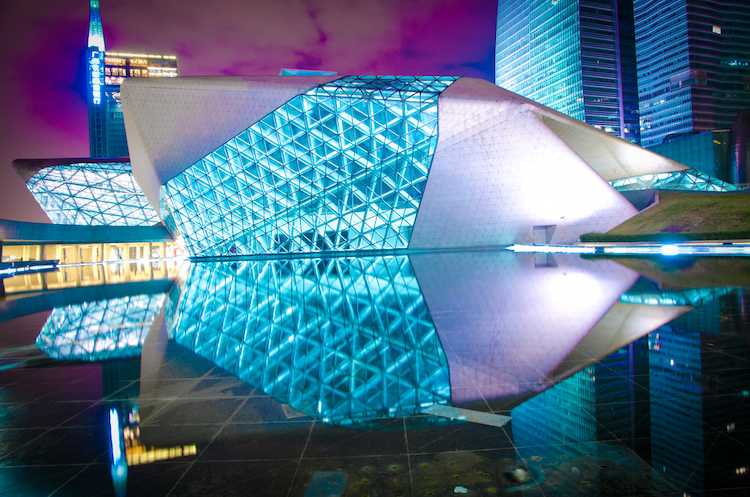
Guangzhou Opera House (Photo: panxunbin/Depositphotos)
Full Name | Zaha Mohammad Hadid |
Born | October 31, 1950 (Baghdad, Iraq) |
Died | March 31, 2016 (Miami, Florida) |
Notable Work | London Aquatics Centre, Guangzhou Opera House |
Movement | Deconstructivist |
Affectionately called “the Queen of the Curve,” Zaha Hadid made an indelible mark on 21st-century architecture. She helped usher in a new era of architecture with her futuristic designs and was the first woman to win the Pritzker Prize. But while her designs are cutting-edge, they often have a base in nature. For instance, her iconic Guangzhou Opera House was inspired by pebbles that have been rubbed smooth by the waters of a stream. Though she, unfortunately, passed at a young age, her legacy is carried on by her firm, Zaha Hadid Architects.
Bjarke Ingels
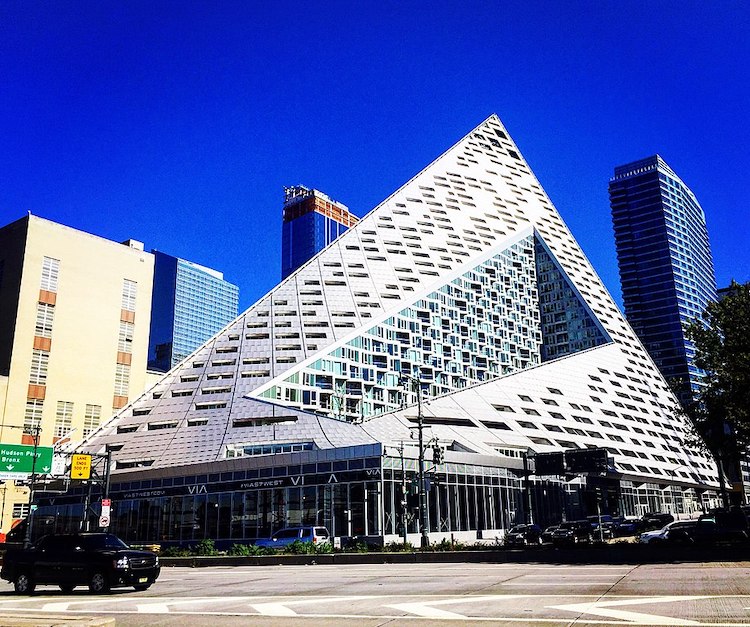
VIA 57 West (Photo: Razvan Dinu via Wikimedia Commons, CC BY-SA 4.0)
Full Name | Bjarke Ingels |
Born | October 2, 1974 (Copenhagen, Denmark) |
Notable Work | Via 57 West, LEGO House |
One of the most exciting figures in architecture today, Danish architect Bjarke Ingels is creating dramatic, impactful work with his firm BIG. Known for his bold, playful designs, Ingels was mentored by Rem Koolhaas. Through BIG, Ingels is not only designing single buildings but entire urban developments. Sustainability is a core value of the firm, with BIG's buildings weaving sustainability into the fabric of the design, rather than leaving it as an afterthought.
Related Articles:
11 Architectural Styles That Define Western Society
20 Inspiring and Famous Architecture Quotes by Master Architects
20 Documentaries About Famous Architects and Great Architecture
25 Books That Every Architect and Architecture Lover Should Read
